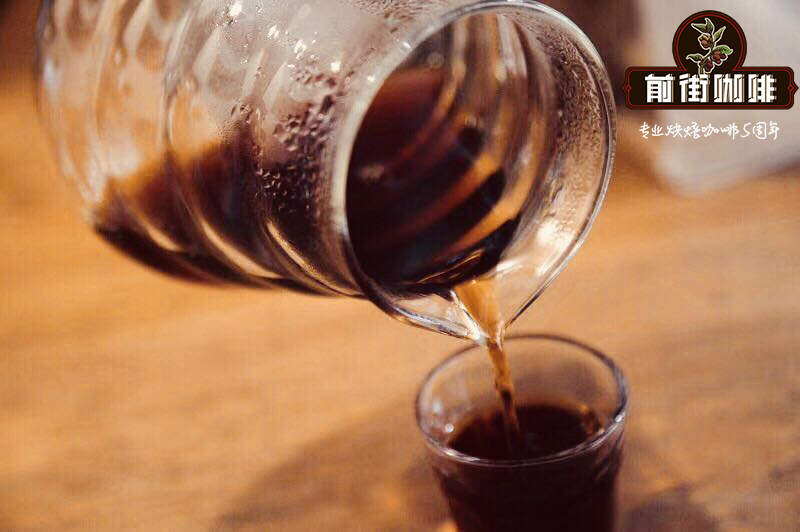Colombian Coffee Colombian Saint Ario Manor introduction.

Professional coffee knowledge exchange more coffee bean information please follow the coffee workshop (Wechat official account cafe_style)
Saint Ali'o Manor is located in the alpine volcanic area (CAUCA) at a high altitude of 1950-2100 meters, facing the Pacific Ocean to the west, and has a unique micro-climate. Coffee trees are mostly planted on volcanic slopes and absorb the essence of volcanic ash soil, so this area is not only a high-quality growing environment for coffee beans, but also a cradle for coffee beans. In the manor, the planting is divided into 266 small plots, and the soil properties and climate conditions of each block are studied by scientific analysis, and the most accurate quality management is carried out. Then through the strict control of each link in the process of raw bean processing, the manor sends the boutique coffee beans to every customer.
Matthew Perger, a cafe from St. Ali, Australia, won the runner-up honor in the 2013 World Barista Competition (World Barista Championship) by using Bourbon, Kaddura and geisha from Saint Ario's Manor as the Italian coffee formula in the competition. In addition, South Korean contestant Jinkyu Kim also has in the formula, uses the Bourbon of the San Tuareo Manor to enter the semi-finals. It is also one of the formula beans used by Sasa Sestic, the newly released 2015 World Coffee Masters Champion.
Saint Ario Manor (Finca Santuario Heliconiaso) has been a leader in technology and planting methods in Colombia's boutique coffee farm for many years, the soul of which is the manor owner Camilo (Camilo Merizalde). Camilo was born in the Valle de Cauca Valley of Colombia, often running to the coffee farm near his home and watching adults handle coffee. Until he decided to study in the United States after graduating from high school, he became the manager of a Colombian food and beverage factory in the United States and often had the opportunity to go back to his hometown of Colombia to buy raw coffee beans. At that time, Camilo began to wonder why Colombian coffee could not be compared with Africa and Central America in quality, and it was often believed that Colombian coffee was not among the producers of boutique coffee. During this period, Camilo began to study and read knowledge and books about coffee planting in the United States, hoping to grow stunning boutique coffee. At the same time, Camilo also continued to look for estates with high-quality microclimate environment in Colombia, until he finally found the best farmland in Colombia's Cauca province in 2000. At this time, Camilo immediately embarked on the transformation of the estate, large and small, ready to realize the ideal coffee farm concept in this manor named San Tuareo (Finca Santuario).
In the first step, Camilo decided to start with the improvement of the soil quality in the manor, by planting a large number of ash leaf plants to provide rich and natural nitrogen, while retaining many native plants and fruit trees to provide a diversified source of nutrients. Camilo then began to analyze the topography of the manor and divided it into 266 different micro-blocks. To make it easier for landowners to track and manage the growth of coffee and changes in microclimate in the park. The second step is to start selecting the varieties of coffee to be planted. Camilo made up his mind at the very beginning to choose native varieties with low yield and good quality, and finally planted the first Tibica coffee tree in November 2002. until today, many varieties with excellent cup performance have been expanded in the Chateau de San Tu Ali'o, such as Tibika, geisha, bourbon, pointed bourbon, and so on. As the elevation of the manor is as high as 2,000 meters, there is a large temperature difference between day and night and there is a lot of volcanic ash soil, so it is especially suitable for the cultivation of these delicate varieties. The third step is to build our own washing treatment plant and exposure drying room, and the drying room has many very advanced equipment in Colombia. Camilo first installed large exhaust fans on both sides of the drying chamber. The principle of exhaust fans is used to accelerate air flow, which can not only avoid excessive fermentation of raw beans, but also stably control the temperature of the exposure room. The experimental Camilo even improved the washing equipment in the washing plant through the experience of working with 2015 the World Barista Championships (WBC) champion Sasa Sestic, using the design of stainless steel buckets and fillets to greatly improve the quality stability and sweetness feeling.
After years of hard work, Camilo's first batch of San Tu Ali raw beans were officially exported in 2005, and today they have become the first choice for many contestants. In addition to WBC champion Sasa Sestic, Australian barista champion Matt Perger in 2013 also praised the raw beans of Saint Tu Ali'o and won the second place in WBC World Series by combining with EK43 bean mill that year. Camilo is constantly trying and experimenting with many new ways to improve the quality of coffee in his experience of working with these contestants, and more flavor and unique varieties of the manor are always found in the annual cup test.
Important Notice :
前街咖啡 FrontStreet Coffee has moved to new addredd:
FrontStreet Coffee Address: 315,Donghua East Road,GuangZhou
Tel:020 38364473
- Prev

Colombia coffee Colombia vera region introduction.
Professional coffee knowledge exchange More coffee bean information Please pay attention to coffee workshop (Weixin Official Accounts cafe_style) In Colombia, three Cordiera Mountains run north-south and extend to the Andes Mountains. Local coffee farmers grow coffee along the highlands of these mountains, which has diversified climate production conditions; also because of the change of altitude, the coffee industry in Colombia
- Next

Colombian Coffee beans Colombian Kogi Manor / Xuefeng Manor introduction.
For more information on coffee beans, please follow the coffee workshop (Wechat official account cafe_style) "Kogui" can also be used as "Kogi" or "Cogui", which means "Jaguar" in Kogi. The Kogi people are of American Indian origin and live in Sierra Nevada, Santa Marta in the Sierra Nevada of Colombia.
Related
- Does Rose Summer choose Blue, Green or Red? Detailed explanation of Rose Summer Coffee plots and Classification in Panamanian Jade Manor
- What is the difference between the origin, producing area, processing plant, cooperative and manor of coffee beans?
- How fine does the espresso powder fit? how to grind the espresso?
- Sca coffee roasting degree color card coffee roasting degree 8 roasting color values what do you mean?
- The practice of lattes: how to make lattes at home
- Introduction to Indonesian Fine Coffee beans-- Java Coffee producing area of Indonesian Arabica Coffee
- How much will the flavor of light and medium roasted rose summer be expressed? What baking level is rose summer suitable for?
- Introduction to the characteristics of washing, sun-drying or wet-planing coffee commonly used in Mantenin, Indonesia
- Price characteristics of Arabica Coffee Bean Starbucks introduction to Manning Coffee Bean Taste producing area Variety Manor
- What is the authentic Yega flavor? What are the flavor characteristics of the really excellent Yejasuffi coffee beans?

